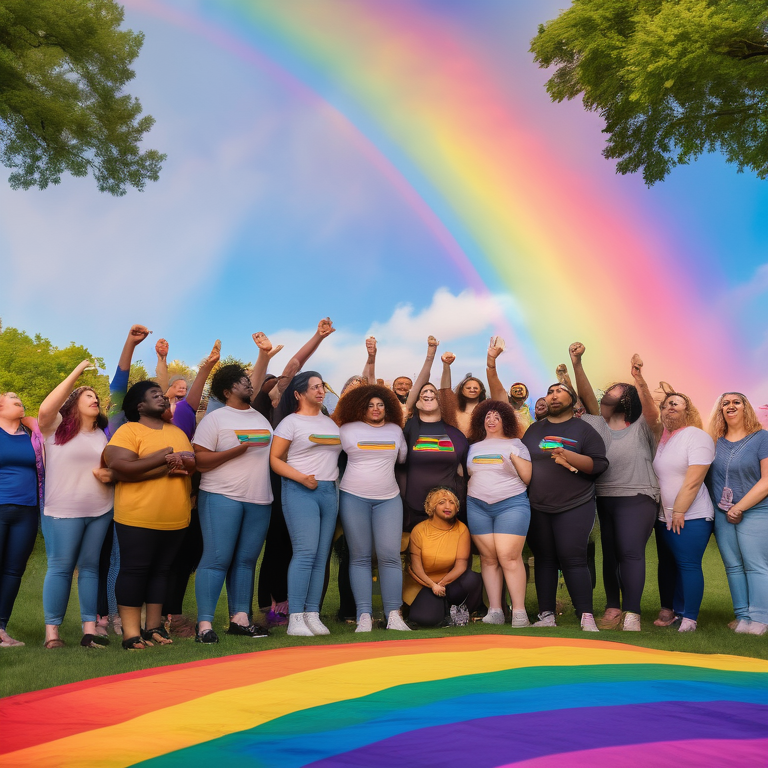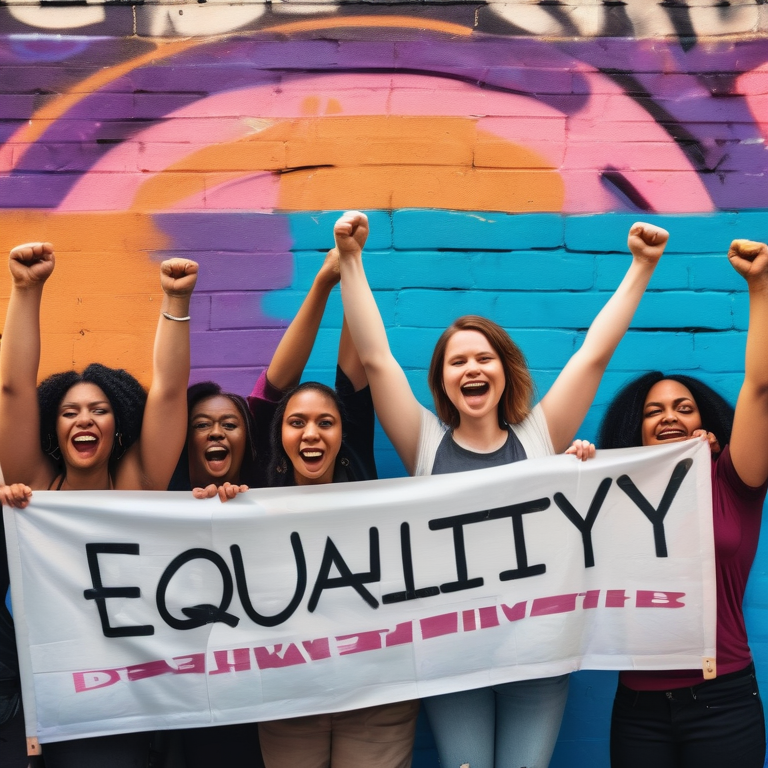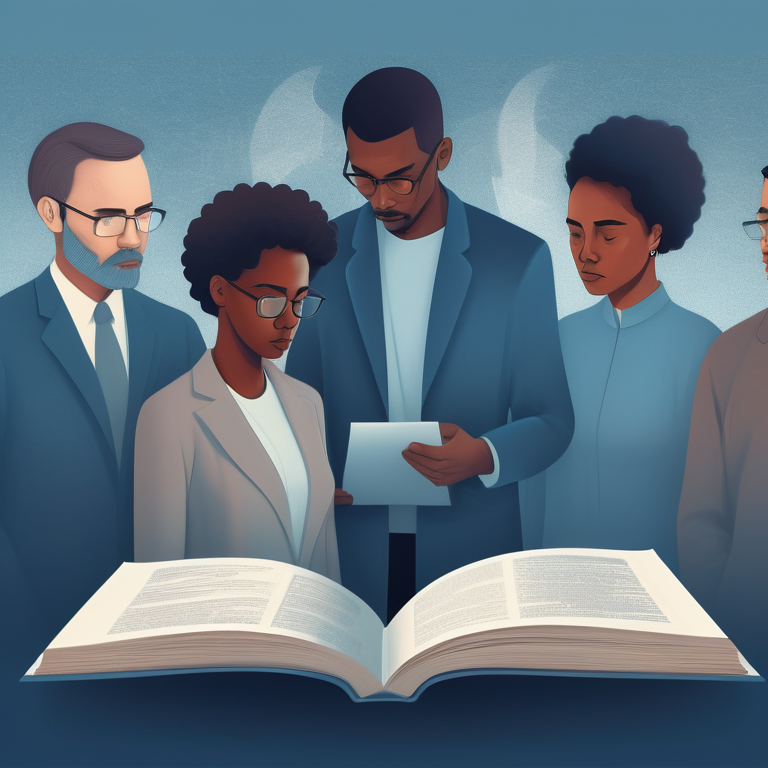Intersectionality in LGBTQ+ Advocacy

Key Highlights
- Intersectionality plays a crucial role in LGBTQ+ advocacy by recognizing the overlapping forms of discrimination faced by individuals who belong to multiple marginalized groups within the community.
- Amplifying diverse voices within the LGBTQ+ community is essential for creating an inclusive advocacy strategy.
- Addressing overlapping forms of discrimination is necessary for achieving comprehensive LGBTQ+ rights.
- Women of color face unique challenges within LGBTQ+ spaces due to the intersection of their race, gender, and sexual orientation.
- Intersectional campaigns have been successful in bringing about policy and social change.
- Intersectionality in LGBTQ+ advocacy is not limited to a specific region but is a global movement that addresses the rights and challenges faced by LGBTQ+ individuals worldwide.
Introduction
Intersectionality is a concept that has gained significant attention in recent years within the LGBTQ+ advocacy movement. It recognizes that individuals can experience multiple forms of oppression and discrimination based on the intersection of their various identities. In the context of LGBTQ+ advocacy, intersectionality acknowledges that someone’s experiences and challenges are shaped not only by their sexual orientation or gender identity but also by other aspects of their identity, such as race, ethnicity, class, disability, and more.
Understanding and incorporating intersectionality into LGBTQ+ advocacy is crucial for creating a more inclusive and effective movement. By recognizing and addressing the overlapping forms of discrimination faced by individuals who belong to multiple marginalized groups within the LGBTQ+ community, advocates can work towards a more comprehensive and equitable approach to achieving LGBTQ+ rights.
In this blog, we will explore the concept of intersectionality in LGBTQ+ advocacy, delve into its role in amplifying diverse voices within the community, address the challenges faced by women of color within LGBTQ+ spaces, examine case studies of intersectional advocacy in action, and discuss the impact of intersectionality on policy and social change. We will also provide tools for building an intersectional advocacy strategy and answer frequently asked questions about the importance of intersectionality in LGBTQ+ advocacy.
Understanding Intersectionality in LGBTQ+ Advocacy
Intersectionality is a term that describes the interconnected nature of social identities and the ways in which they intersect to create unique experiences of discrimination and privilege. In the context of LGBTQ+ advocacy, intersectionality recognizes that individuals may face discrimination and marginalization not only based on their sexual orientation or gender identity but also due to other factors such as race, ethnicity, class, disability, and more. This understanding of intersectionality is crucial in developing an inclusive and comprehensive approach to LGBTQ+ advocacy that addresses the diverse needs and challenges faced by different individuals within the community.
Defining Intersectionality
Intersectionality is a framework that acknowledges the complex ways in which various social identities and systems of oppression intersect and interact. It goes beyond considering a person’s sexual orientation or gender identity in isolation and recognizes that these identities intersect with other aspects such as race, class, disability, and more, shaping an individual’s experiences and challenges.
For example, a transgender person of color may face discrimination and marginalization not only due to their gender identity but also because of their race. Similarly, an LGBTQ+ individual with a disability may face unique challenges that arise from the intersection of their sexual orientation or gender identity, and their disability and sex characteristics. Understanding intersectionality and the various factors that can intersect in discrimination is crucial in advocating for the LGBTQ+ community.
Understanding intersectionality is crucial in LGBTQ+ advocacy because it recognizes the multiple layers of discrimination and oppression that individuals may face. It highlights the importance of addressing not only gender identity and sexual orientation but also other intersecting identities and the challenges they bring, such as mental health disparities, experiences of violence, and limited access to resources and support.
The Origins of Intersectional Theory
Intersectionality as a concept emerged from the work of black feminist legal academic, Professor Kimberlé Crenshaw, in the late 1980s. In her groundbreaking essay, “Demarginalizing the Intersection of Race and Sex,” Crenshaw highlighted the need to understand and address the unique experiences of black women who face both racial and gender discrimination.
Since then, intersectionality has become a key framework for understanding and challenging various forms of oppression and discrimination, including within the LGBTQ+ advocacy movement. It recognizes that individuals can experience multiple forms of marginalization simultaneously due to the intersection of their different identities.
In the context of LGBTQ+ advocacy, intersectionality has been instrumental in acknowledging the specific challenges faced by LGBTQ+ youth, particularly those from marginalized communities. By recognizing the ways in which multiple forms of discrimination intersect, advocates can work towards more inclusive and comprehensive solutions that address the unique experiences of LGBTQ+ youth and ensure their rights are protected.
Intersectionality’s Role in LGBTQ+ Advocacy
Intersectionality plays a crucial role in LGBTQ+ advocacy by recognizing and addressing the overlapping forms of discrimination faced by individuals who belong to multiple marginalized groups within the community. This includes transgender people who may face discrimination and marginalization not only based on their gender identity but also due to other factors such as race, class, disability, and more.
By incorporating an intersectional approach, LGBTQ+ advocates can develop more comprehensive strategies that take into account the diverse needs and experiences of different individuals within the community. This approach ensures that advocacy efforts are inclusive, equitable, and effective in addressing the systemic barriers and inequalities faced by transgender people and other marginalized groups within the LGBTQ+ community.
Amplifying Diverse Voices within the LGBTQ+ Community
Amplifying diverse voices within the LGBTQ+ community is essential for creating an inclusive and effective advocacy strategy. By centering the experiences and perspectives of individuals with diverse gender identities and sexual orientations, advocacy efforts can better address the unique challenges and needs of different communities within the LGBTQ+ umbrella. Here are some key ways to amplify diverse voices within the LGBTQ+ community:
- Create platforms and spaces for individuals from marginalized communities to share their stories and experiences.
- Collaborate with grassroots organizations and community leaders who work directly with diverse LGBTQ+ communities.
- Prioritize the leadership and representation of individuals from marginalized communities in decision-making processes and advocacy campaigns.
- Provide support and resources for the development of community-based initiatives that address the specific needs and challenges faced by different communities within the LGBTQ+ community.
- Advocate for policies and practices that promote inclusivity and equity in all areas of LGBTQ+ life, including healthcare, education, employment, and housing.
By amplifying diverse voices, LGBTQ+ advocacy can become more intersectional, inclusive, and effective in addressing the complexities of discrimination faced by different communities within the LGBTQ+ community.
Addressing Overlapping Forms of Discrimination
Intersectionality in LGBTQ+ advocacy also involves addressing the overlapping forms of discrimination faced by individuals based on their various identities. For example, young transgender women may experience discrimination not only based on their gender identity but also due to their age and other intersecting factors such as race or socioeconomic status.
By recognizing and addressing these intersecting forms of discrimination, LGBTQ+ advocacy can work towards a more comprehensive and inclusive approach. This includes advocating for policies and practices that address the unique challenges faced by young transgender women, such as access to healthcare, education, employment, and safe housing. It also involves promoting awareness and education about the experiences of young transgender women and creating supportive and affirming spaces within LGBTQ+ communities, specifically for LGBTQ youth.
By addressing overlapping forms of discrimination, LGBTQ+ advocacy can ensure that the rights and needs of all individuals within the community are respected and protected.
Challenges Faced by Women of Color within LGBTQ+ Spaces
While LGBTQ+ spaces strive to be inclusive, women of color often face unique challenges within these spaces due to the intersection of their race, gender, and sexual orientation. These challenges can include:
- Lack of representation: Women of color may find themselves underrepresented in leadership positions and decision-making processes within LGBTQ+ organizations and spaces.
- Stereotyping and fetishization: Women of color may face stereotypes or be fetishized based on their racial identity, which can lead to objectification and dehumanization.
- Exclusionary practices: LGBTQ+ spaces may unintentionally perpetuate exclusionary practices that fail to address the specific needs and experiences of women of color.
- Limited access to resources and support: Women of color may encounter barriers to accessing resources and support networks within LGBTQ+ spaces, further exacerbating feelings of marginalization.
It is essential for LGBTQ+ advocacy to address these challenges and work towards creating more inclusive and equitable spaces that uplift and amplify the voices and experiences of women of color within the community.
Historical Exclusion and Marginalization
The historical exclusion and marginalization of women of color within LGBTQ+ spaces has deep roots. In many instances, the LGBTQ+ movement has focused primarily on the experiences and issues faced by white, cisgender gay men, leading to the erasure and invisibility of other identities within the community.
This exclusion has been detrimental to the overall progress of LGBTQ+ advocacy, as it perpetuates a narrow understanding of the experiences and needs of diverse individuals within the community. Women of color have often faced stigma and discrimination not only based on their sexual orientation but also due to their ethnicity or race, often facing the threat of the death penalty in countries where homosexuality is criminalized.
Addressing this historical exclusion requires a commitment to intersectional advocacy that recognizes and uplifts the voices and experiences of women of color. It involves creating platforms for their stories to be heard, challenging stereotypes and stigmas, and actively working towards inclusivity and equity within LGBTQ+ spaces.
Current Efforts Towards Inclusivity
Efforts towards inclusivity within LGBTQ+ spaces have been gaining momentum in recent years. Organizations and individuals are actively working to challenge systemic discrimination and create more inclusive communities. Here are some current efforts towards inclusivity within LGBTQ+ advocacy:
- Education and awareness: Increasing education and awareness about the experiences and challenges faced by women of color within LGBTQ+ spaces is crucial. This includes providing resources, workshops, and trainings that promote understanding and allyship.
- Intersectional representation: Ensuring intersectional representation in leadership positions and decision-making processes is essential for creating inclusive LGBTQ+ organizations and spaces. This involves actively seeking out and amplifying the voices and perspectives of women of color.
- Language and pronoun inclusivity: Recognizing and respecting individuals’ preferred pronouns and using inclusive language that acknowledges the diverse identities and experiences within the LGBTQ+ community.
- Collaborative partnerships: Building collaborative partnerships with organizations and individuals that specialize in advocating for the rights and inclusion of women of color within the broader LGBTQ+ movement.
These efforts are crucial for creating more inclusive and equitable LGBTQ+ spaces that prioritize the voices and experiences of all individuals within the community, including women of color.
Case Studies of Intersectional Advocacy in Action
Intersectional advocacy in action has led to significant progress in advancing LGBTQ+ rights and inclusivity. Here are some case studies highlighting successful intersectional advocacy campaigns:
- Black Lives Matter and LGBTQ+ Rights: The Black Lives Matter movement has highlighted the intersectional experiences of Black LGBTQ+ individuals and emphasized the need to address systemic racism and homophobia simultaneously. This intersectional approach has brought attention to the unique challenges faced by Black LGBTQ+ communities and has led to increased support for their rights and inclusion.
- Indigenous LGBTQ+ Activism: Indigenous LGBTQ+ activists have been at the forefront of intersectional advocacy, highlighting the specific challenges faced by Indigenous LGBTQ+ individuals and communities. Their work has led to increased recognition of the unique needs and experiences of Indigenous LGBTQ+ people and has resulted in policy changes and increased support.
- Transgender Rights and Immigration: Intersectional advocacy has been successful in addressing the unique challenges faced by transgender immigrants. By highlighting the intersection of gender identity and immigration status, advocates have brought attention to the specific needs and rights of transgender individuals within the immigration system, leading to policy changes and increased support.
These case studies demonstrate the importance of an intersectional approach in LGBTQ+ advocacy, as it allows for a more comprehensive and effective response to the diverse needs and challenges faced by different communities within the LGBTQ+ umbrella.
Successful Campaigns and Their Strategies
Successful LGBTQ+ advocacy campaigns have employed various strategies to bring about meaningful change. Here are some examples of successful campaigns and their strategies:
- Marriage Equality: The movement for marriage equality utilized strategies such as public awareness campaigns, legal challenges, and grassroots organizing to advocate for the recognition of same-sex marriage. By framing the issue in terms of love, commitment, and equal rights, advocates were able to build broad support and eventually achieved significant victories in many countries.
- Healthcare Equality: LGBTQ+ activists and organizations have successfully advocated for improved healthcare access and equality by raising awareness about the unique healthcare needs of LGBTQ+ individuals. This has involved educating healthcare providers, advocating for LGBTQ+-inclusive policies and practices, and fostering partnerships between healthcare professionals and LGBTQ+ communities.
- Anti-Discrimination Laws: Advocacy efforts to pass anti-discrimination laws have relied on strategies such as coalition-building, public education campaigns, and grassroots mobilization. These campaigns have focused on highlighting the importance of protecting LGBTQ+ individuals from discrimination and emphasizing the principles of equality and human rights.
These successful campaigns demonstrate the power of strategic advocacy in advancing LGBTQ+ rights and achieving meaningful change in areas such as marriage equality, healthcare, and anti-discrimination protections.
Lessons Learned from Grassroots Movements
Grassroots movements have played a crucial role in advancing LGBTQ+ rights and promoting intersectional advocacy. Here are some lessons learned from grassroots movements:
|
Lesson |
Example |
|
Building inclusive coalitions |
In January, LGBTQ+ organizations collaborated with racial justice groups to organize joint protests and advocate for comprehensive LGBTQ+ rights. |
|
Amplifying diverse voices |
In April, grassroots LGBTQ+ activists organized community forums to provide a platform for individuals from marginalized communities to share their stories and experiences. |
|
Utilizing digital platforms |
In August, grassroots organizations leveraged social media campaigns to raise awareness about the unique challenges faced by LGBTQ+ youth and to mobilize support for LGBTQ+ rights. |
These examples demonstrate the power of grassroots movements in driving change and the importance of inclusivity, amplifying diverse voices, and utilizing digital platforms in intersectional LGBTQ+ advocacy.
The Impact of Intersectionality on Policy and Social Change
Intersectionality has had a significant impact on policy and social change within the LGBTQ+ advocacy movement. By recognizing and addressing the intersecting forms of discrimination faced by individuals, intersectional advocacy has brought attention to previously overlooked issues and challenges. This has led to the adoption of more inclusive terminology and the development of policies and practices that better reflect the diverse experiences and needs of the LGBTQ+ community. However, it is important to note that intersectionality continues to face resistance and hostility from those who may feel threatened by the dismantling of systemic inequalities. Despite this, intersectional advocacy remains a powerful tool for driving policy and social change and promoting a more equitable and inclusive society.
Influencing Public Policy on LGBTQ+ and Women’s Rights
Influencing public policy on LGBTQ+ and women’s rights requires a multifaceted approach that includes advocacy, education, and coalition-building. Here are some strategies that have been successful in driving policy change:
- Human rights advocacy: Engaging with international human rights organizations and promoting human rights standards to hold governments accountable for their treatment of LGBTQ+ individuals and women.
- Legal advocacy: Challenging discriminatory laws and policies through strategic litigation, including cases related to LGBTQ+ rights and gender equality.
- Grassroots mobilization: Building grassroots movements and coalitions to advocate for policy change, raise public awareness, and put pressure on policymakers.
- International pressure: Utilizing international platforms and partnerships to exert pressure on governments that violate LGBTQ+ and women’s rights, such as advocating for economic sanctions or public condemnation.
- Public education: Conducting public education campaigns to challenge stereotypes, address misconceptions, and promote understanding and acceptance of LGBTQ+ individuals and women.
By employing these strategies, LGBTQ+ and women’s rights advocates can work towards influencing public policy and creating a more inclusive and equitable society.
The Role of Intersectionality in Legal Advocacy
Intersectionality plays a crucial role in legal advocacy for LGBTQ+ rights. By recognizing the intersecting forms of discrimination faced by individuals, legal advocates can develop more comprehensive arguments and strategies that effectively address the unique experiences and challenges of different communities within the LGBTQ+ umbrella. This includes considering the specific legal challenges faced by transgender individuals, such as legal recognition of gender identity, healthcare access, and protection against discrimination. Intersectional legal advocacy also involves challenging discriminatory laws and policies that disproportionately impact marginalized communities within the LGBTQ+ community. By incorporating an intersectional approach, legal advocates can better advocate for the rights and needs of all individuals regardless of their sexual orientation, gender identity, race, or other intersecting factors.
Intersectionality in LGBTQ+ Advocacy Across the Globe
Intersectionality in LGBTQ+ advocacy is not confined to a specific region but is a global movement that addresses the rights and challenges faced by LGBTQ+ individuals worldwide. This includes recognizing and addressing the unique challenges faced by LGBTQ+ individuals in different cultural, social, and political contexts, including in Africa. For example, advocacy efforts in Asia may focus on challenging laws that criminalize homosexuality and promoting LGBTQ+ rights within conservative societies. In Nigeria and other African countries, intersectional advocacy may involve addressing the intersection of LGBTQ+ rights with issues such as religion, cultural norms, and colonial legacies. By acknowledging the diverse experiences and needs of LGBTQ+ individuals across the globe, intersectional advocacy can work towards a more inclusive and equitable world for all.
Comparative Analysis of Global Movements
A comparative analysis of global LGBTQ+ movements reveals both similarities and unique challenges faced by different regions. While the LGBTQ+ movement shares a common goal of achieving equality and recognition, the strategies employed can vary based on cultural, social, and political contexts. Here are some examples:
- In some regions, LGBTQ+ movements have focused on challenging discriminatory laws and advocating for legal recognition and protection. This includes campaigns for marriage equality and anti-discrimination laws.
- In other regions, LGBTQ+ movements may prioritize community organizing, education, and visibility to challenge social stigma and promote acceptance.
- Movements also differ in their inclusion of intersex rights, recognizing the unique challenges faced by intersex individuals, and advocating for their rights and bodily autonomy.
By comparing and learning from different global movements, LGBTQ+ advocates can gain valuable insights and strategies to inform their own advocacy efforts and promote positive change.
Cultural Context and Intersectional Challenges
Cultural context plays a significant role in shaping intersectional challenges faced by LGBTQ+ individuals. Cultural norms, religious beliefs, and societal expectations can impact the acceptance and rights of LGBT people worldwide in different regions. These challenges can manifest in various ways, including limited access to healthcare, discrimination in educational and employment settings, and lack of legal recognition.
Understanding the cultural context is vital in developing effective intersectional advocacy strategies. This includes engaging with local communities, addressing cultural norms and misconceptions, and promoting education and dialogue to challenge stigma and discrimination. Additionally, it involves ensuring that healthcare systems are inclusive and culturally competent, providing LGBTQ+ individuals with the care and support they need, particularly for those who identify as LGBTI.
By considering the cultural context and intersectional challenges, LGBTQ+ advocates can tailor their advocacy efforts to better address the needs and experiences of individuals within specific regions and communities.
Tools for Building an Intersectional Advocacy Strategy
Building an intersectional advocacy strategy involves incorporating various tools and approaches to address the complex challenges faced by LGBTQ+ individuals. Here are some tools for building an intersectional advocacy strategy:
- Education and awareness campaigns: Promote understanding of LGBTQ+ issues, address stereotypes and misconceptions, and challenge stigma.
- Inclusive language and pronoun usage: Use inclusive language that respects and affirms diverse gender identities and pronouns.
- Collaborative partnerships: Work with organizations and individuals from diverse communities to build coalitions and amplify marginalized voices.
- Policy advocacy: Engage with policymakers to advocate for comprehensive LGBTQ+ rights and protections.
- Grassroots organizing: Mobilize communities and individuals at the grassroots level to drive change and create inclusivity.
By utilizing these tools, advocates can develop an intersectional advocacy strategy that addresses the diverse needs and challenges faced by LGBTQ+ individuals, promotes inclusivity, and advances social change.
Engaging with Diverse Communities
Engaging with diverse communities is essential for effective intersectional LGBTQ+ advocacy. Here are some strategies for engaging with diverse communities:
- Listening and learning: Actively listen to the needs and experiences of individuals from diverse communities to better understand their perspectives and challenges.
- Culturally competent outreach: Tailor outreach efforts to be culturally competent and respectful of different cultural norms and values.
- Building trust and relationships: Foster relationships and build trust with community leaders and organizations that work directly with diverse communities.
- Collaborative decision-making: Include diverse voices in decision-making processes to ensure that advocacy efforts are inclusive and representative.
- Providing resources and support: Ensure that resources and support are accessible to individuals from diverse communities, including LGBTQ+ youth and transgender people.
By engaging with diverse communities, LGBTQ+ advocates can develop more inclusive and effective strategies that address the unique needs and challenges faced by different communities within the LGBTQ+ umbrella.
Educating Allies on Intersectionality
Educating allies on intersectionality is crucial for creating a more inclusive LGBTQ+ advocacy movement. Here are some key points to address when educating allies:
- Explaining the concept of intersectionality and its importance in understanding the diverse experiences and challenges faced by LGBTQ+ individuals.
- Emphasizing the need to recognize and address multiple forms of discrimination based on gender identity, sexual orientation, race, ethnicity, and other intersecting factors.
- Providing resources and information on the unique challenges faced by different communities within the LGBTQ+ community, such as transgender individuals, people of color, and individuals from marginalized backgrounds.
- Encouraging allies to actively listen to and learn from the experiences and perspectives of individuals from diverse communities and to use their privilege to uplift marginalized voices.
By educating allies on intersectionality, LGBTQ+ advocates can build a stronger and more inclusive movement that is better equipped to address the diverse needs and challenges faced by the community.
Conclusion
Intersectionality is crucial in LGBTQ+ advocacy as it acknowledges the diverse experiences within the community. By amplifying marginalized voices and addressing intersecting forms of discrimination, we can create more inclusive spaces. Efforts to support women of color in LGBTQ+ movements are vital for progress. Through successful campaigns and grassroots activism, we can drive policy changes and social acceptance. Global intersectional movements offer valuable lessons for building advocacy strategies. Let’s continue educating ourselves and engaging with diverse communities to promote equality. Share this knowledge on social media to further support intersectional LGBTQ+ advocacy worldwide.
Frequently Asked Questions
Why is Intersectionality Important in LGBTQ+ Advocacy?
Intersectionality is important in LGBTQ+ advocacy because it recognizes the unique challenges faced by individuals who belong to multiple marginalized groups within the community. It promotes inclusivity, understanding, and effective advocacy that addresses the complex intersections of gender identity, mental health, and other aspects of identity within the LGBTQ+ community.
How Can I Support Intersectional LGBTQ+ Advocacy?
You can support intersectional LGBTQ+ advocacy by educating yourself about the unique challenges faced by different communities within the LGBTQ+ umbrella, amplifying diverse voices, advocating for inclusive policies and practices, and supporting organizations and initiatives that prioritize intersectionality and human rights.
Why is it important to consider intersectionality when advocating for LGBTQ+ rights?
Considering intersectionality is crucial when advocating for LGBTQ+ rights because it recognizes that individuals may face multiple forms of discrimination based on their sexual orientation, gender expression, and other intersecting factors. By addressing intersectionality, advocates can work towards more comprehensive and inclusive solutions that address the diverse needs and challenges faced by LGBTQ+ individuals.
Are there specific challenges faced by individuals who belong to multiple marginalized groups within the LGBTQ+ community?
Yes, individuals who belong to multiple marginalized groups within the LGBTQ+ community, such as transgender people of color, may face specific challenges due to the intersection of their various identities. These challenges can include limited access to healthcare, increased vulnerability to violence, and heightened discrimination. Recognizing and addressing these challenges is essential for promoting social change and achieving equity within the LGBTQ+ community.





